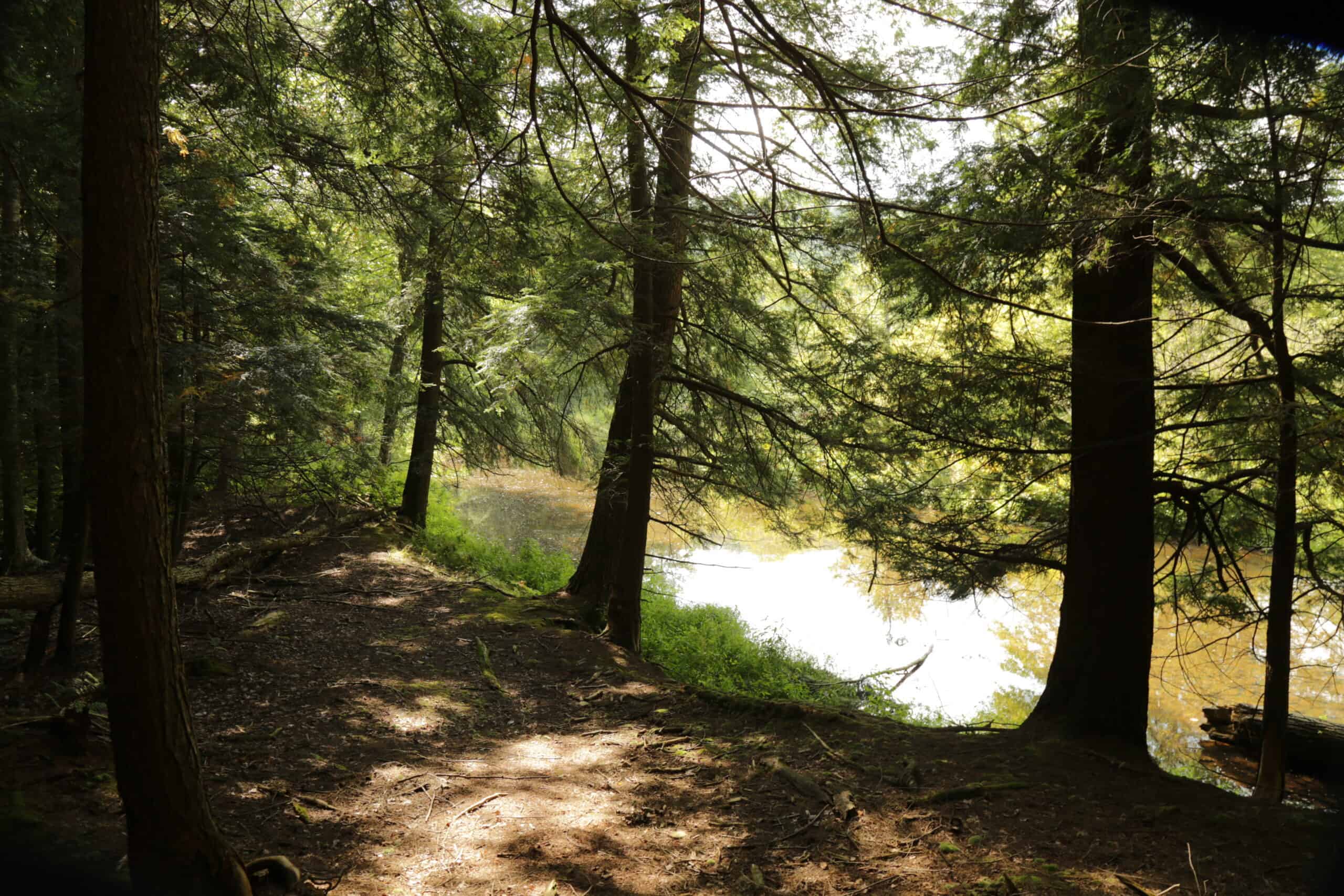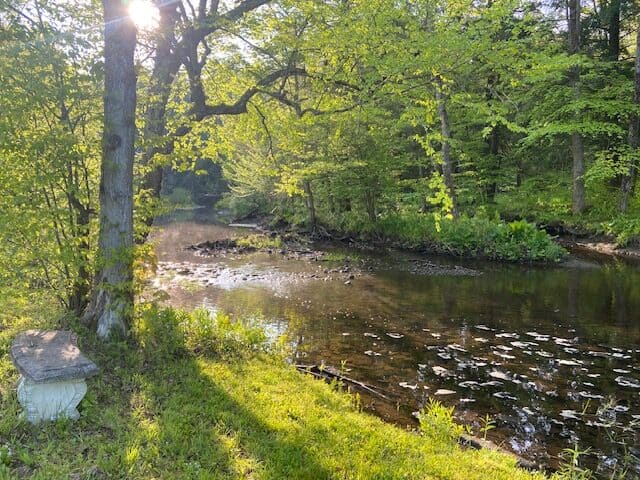
This blog is about creek camping and how we created access to our creek without having a negative impact on the environment.
Creek camping and spending time at the water in the wilderness is a special experience. It takes some planning and some insight to keep vegetation and wildlife impact to a minimum.
This blog shares the steps we took to turn our gorgeous but almost inaccessible creek into a favorite destination for our visitors.
The Adventure of going to the creek
We’re very lucky to have Black Creek running through the middle of our property. For as long as I can remember it’s been a favorite place to be.
Long afternoons splashing in the water. Moving rocks on the creek bed to deepen a swimming hole. Piling them in a line in the shallows to make a dam. Time with friends and family. It’s a place to make memories that last a lifetime.
Creek camping
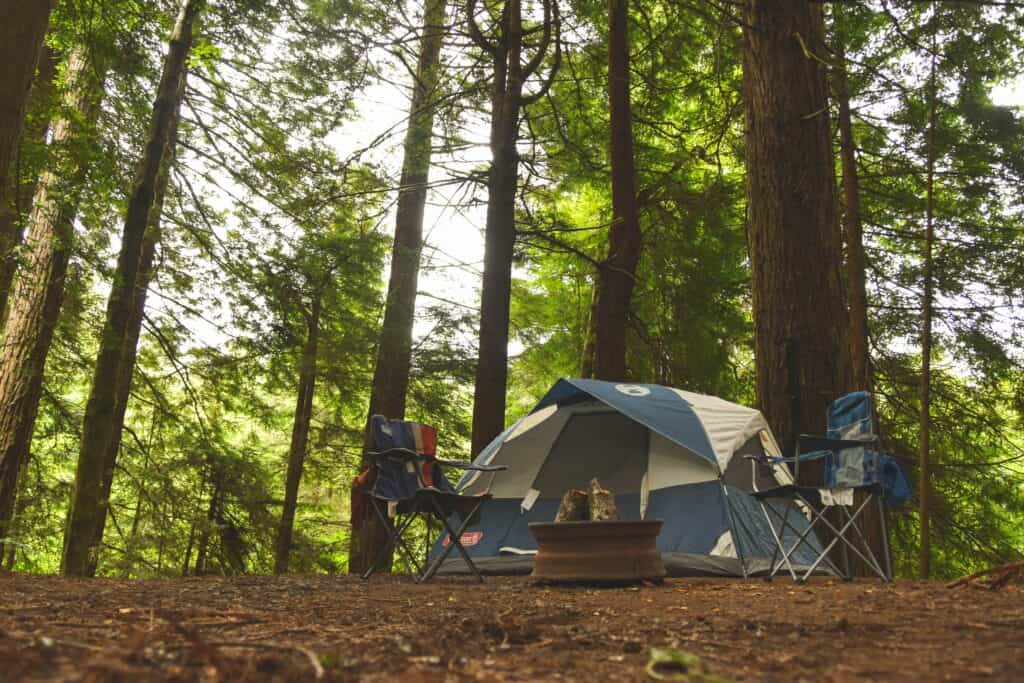
The sound of the water, trillions of stars, the scent of the hemlock forest, all in a private and safe space, make the creek a perfect place to camp. It’s beyond peaceful. And although they’re scarce when people are around, wildlife regularly come to the creek for water.
Protecting their habitat and preserving the fragile beauty of the property is a top priority. Making a usable and eco- friendly camping space is extremely important and it takes some work.
Access is a challenge
Banded by wetlands, cutgrass, and thorn brush, getting to the creek once felt next to impossible. The mud loved to grab onto sneakers and rain boots and a few pair are still buried in the soggy ground.
After making it to the creek bank, there was another few feet of mud – more stinky quicksand to devour shoes. Walks next to the creek were cut off in all directions by more mucky areas caused by runoff.
As a result, visits to the creek became few and far between and large portions of the most beautiful part of the property went unused.
Tuning into the property
When we dove into developing our private park and campsite a few years ago, creating easier access to the water was key. We wanted to be eco-friendly as we put in trails, made the western bank walkable, and established camping spots.
The first step was to stop thinking about where we wanted things and to start thinking about where the land and the creek wanted things.
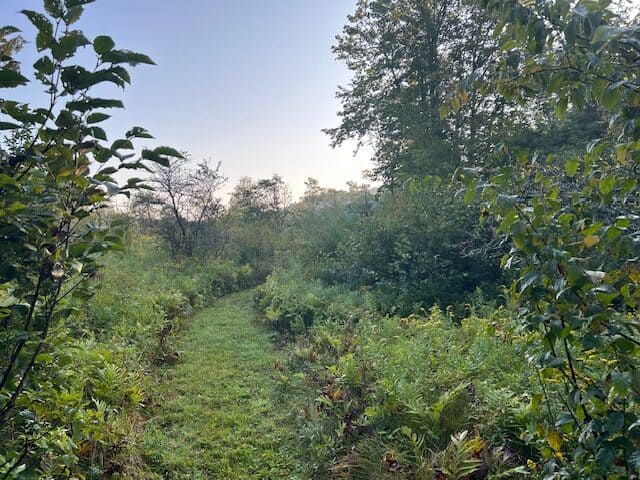
In knee- height rubber boots and long sleeves, we explored the property leading to the water and along its banks.
Luckily, some of the highest and driest areas were right at the water, created by hundreds of years of Spring sediment dumps. The creek runs deep and fast when Winter snow makes way for Spring. This ridge was cut off at a few points, where run off from the wetlands poured into the creek.
Focusing more on the soil instead of how hard it was to get through berry bushes and thorn brush, we were able to determine where the higher ground lay and the best paths for the trails to take.
Appreciating the changes with each season
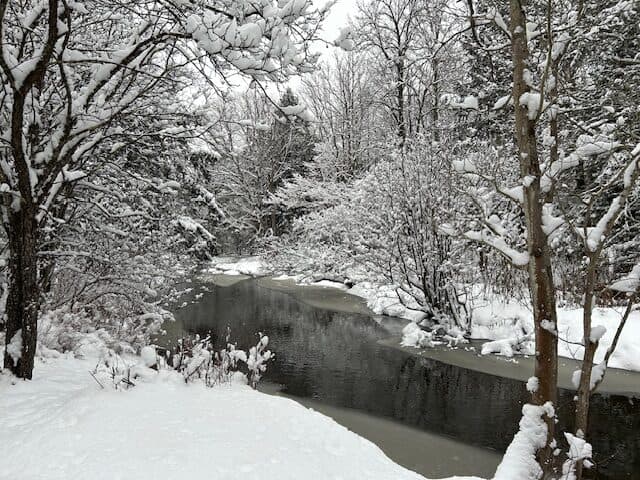
It was very important to be familiar with how things change from season to season and from year to year. In dry months, portions of the creek are only a few inches deep. In the Spring, the same areas are four feet deep, with a current strong enough to carry logs and tons of sediment downstream.
Run off paths also shift from being a low place in the grass to becoming creeks themselves during the rainy season. This was important to think about when putting in walkways and bridges. It also meant that certain areas would only be accessible in the dry season.
A trail system that gives access with very limited impact
The bulk of our paths are mowed trails, about the same width as a riding mower’s cutting deck for ease of maintenance. They follow the higher ground, just outside of the thick of the wetland.
The longer they are maintained, the more the trails dry out and act like any other lawn. This reminds us of how important it is to leave the majority of the wilderness alone. We also trimmed back briars and brush where needed.
An arms-length away from untouched nature

The trails give access to flora and wildlife that many people have never seen before. Grasses, plants and flowers are inches away, and a well-kept trail system keeps visitors on the beaten path. This greatly limits any negative impact on the soil and on the environment.
Bridging run off routes
It’s extremely important to maintain a route for stormwater runoff. Rainwater and melting snow flow over the ground, pick up pollutants and other debris, and then flow into the creek.
Ephemeral streams only run after it rains or when snows melt and are an important part of the creek ecology. After the Spring, some of these streams turn into several feet of unpassable muck along the creek.
We were able to bridge these areas with raised walkways. To minimize impact and realizing that Mother Nature’s designs are subject to change, everything is movable. 6 by 6 s were laid on the ground (with a little digging and adding stone for leveling and drainage). Walkways were built on top of them with 2 by 10 supporting joists. This has made a user-friendly creek path possible with no negative effects.
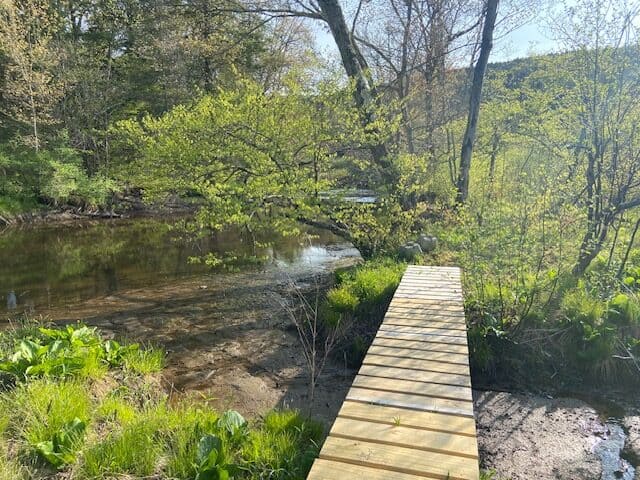
A way through muddy banks
This solution happened by accident. In some places it’s easy to step off the bank and onto the stones in the creek bed. But, in many others, moving from the creek bank into the water means climbing through a few feet of mud.
What started out as a swim float (picture below) now doubles as an easy step from the bank to a floating deck at the creek edge. For longer visits, it can still be untied and brought to the middle of the creek- a perfect place to spend a hot afternoon!

Creating creek camping sites
This is a work in progress, and probably will be for years to come. Following the same principle of sticking to higher ground, camping spots have been cleared on the trail that runs along the ridge next to the creek.
Privacy is key, with sites being situated so that they aren’t visible from the next sites down the line. Other than mowing the sites and installing firepits, there is no further development.
Carry in/ carry out
We like to think that any negative impact that creek camping can have on the environment is almost eliminated by the way we developed the property. Other than the walking trails and a few camping clearings, the creek and our wetlands are untouched.
It’s also very convenient to leave the property spotless – carrying out any garbage or disposing it at based camp (outside the wilderness buffer zone).
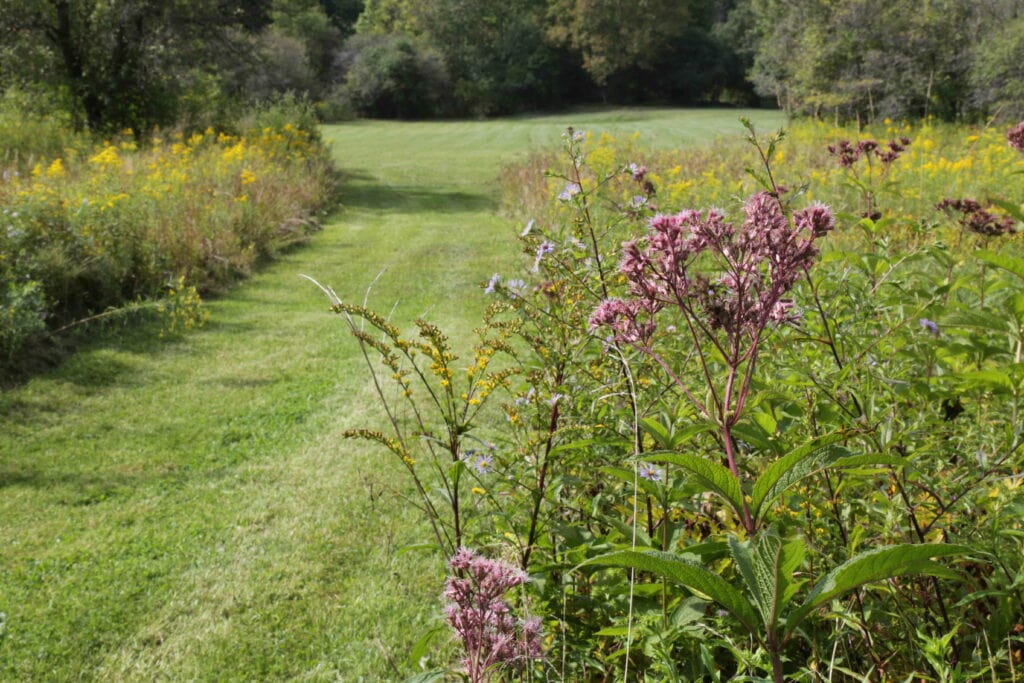
Bathroom facilities (DEC and Health Department approved) and creature comforts on the property
Die hard campers don’t mind roughing it, but for many others, a flushing toilet and a hot shower are non-negotiables. Conveniently locating facilities can also ensure that human waste doesn’t pollute the creek camping environment.
We were certain to install a leach field (filters waste through gravel and stone underground) well beyond the wetland buffer zone. We also had the health department design and inspect the leach field, ensuring that it was sufficient for the camping facilities. We were told that the water coming out on the other end into the evaporation field was clean enough to drink (but we’ll probably be sticking to bottled water).
Bathroom facilities, along with power, WiFi and a grilling area, are available near the cabin cluster base camp a short walk away. This gives creek campers the best of both worlds and keeps potentially harmful activities away from the creek.
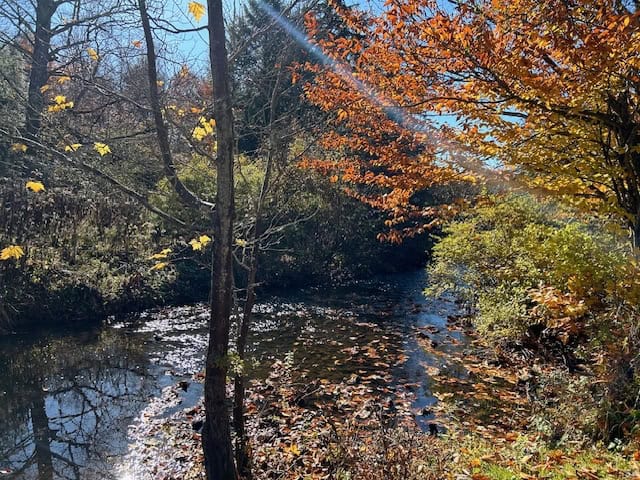
Things we’re glad we have when we’re creek camping
This is pretty basic information for campers, but this list seems even more important when we’re camping at the creek.
Bug spray isn’t always needed, but it can make for a much more enjoyable experience when it is. Why not bring extra?!
Don’t forget a pair of knee- high boots, water shoes, or a pair of shoes you don’t mind ruining. Crossing the creek takes some stable footing but is 100% worth it. At our place, the hemlock forest that rises from the water on the other bank is a must-see!
We bring all the regular camping clothes – extra sweatshirts, jackets, etc. – and also add in a bathing suit that we don’t mind getting a little less bright in the creek water.
Enjoy your creek camping experience!
We wish you all of the peace and togetherness that time at the creek and creek camping can bring! Let’s stay in touch via the Glampsite Joe newsletter or by e-mailing directly through the Contact page.

